Over the years, your Mac hard drive has become a storage for a large number of images, documents, and movies. However, it might happen that your Mac is frozen and refuses to work. What should you do then?
Data loss is a terrible problem. However, recovering data from a Mac hard drive may not be as difficult as you think. In general, retrieving data from an old Mac’s hard drive is far easier than recovering data from a new one. You have a good probability of success if your Mac has a detachable hard drive or an emergency data backup connection on the logic board.
Data recovery might be tough if your Mac would not turn on at all. However, if your Mac turns on but does not boot to the Desktop, the procedures listed below might assist you in recovering your important information. To recover data from a Mac hard disk, follow this detailed instruction.
Must Read: SnapChat Streak Lost! How to Recover It
Why is Your Mac Frozen?
Your Mac may be frozen or unresponsive for a variety of reasons. Here are a few examples of common causes:
- High CPU or memory usage
When particular programs or processes consume a large portion of your Mac’s resources, it might cause system slowdowns or freezes. Examine the Activity Monitor for any resource-intensive processes and consider terminating or resuming them. - Software conflicts or bugs
Conflicts between software applications or defects in the operating system might cause your Mac to freeze in some instances. Keeping your macOS and applications up to date with the most recent updates and patches might help in the resolution of such issues. - Insufficient disk space
When your Mac’s hard drive is nearly full, it might impair system performance and cause it to freeze. Remove unneeded files or transfer them to an external storage device to ensure you have adequate free disk space. - Hardware issues
Your Mac may freeze due to faulty hardware components such as a failed hard drive or an overheated processor. If you suspect a hardware issue, contact Apple Support or go to an authorized service center for assistance. - Malware or viruses
Although malware and viruses are uncommon on Macs in comparison to other platforms, they can nevertheless cause system instability. A comprehensive scan with reliable antivirus software can assist in detecting and removing any possible dangers.
If your Mac freezes, you can attempt a few troubleshooting methods to fix the problem. Start by forcing any unresponsive programs to close by hitting Command + Option + Escape. If it doesn’t work, you may force a restart by holding down the power button until your Mac shuts down and then restarting it.
If the freezing problem persists or occurs frequently, it’s best to get expert help or contact Apple Support for more troubleshooting and support.
Is it Possible to Restore Lost Data on a Mac?

You’re likely wondering: can data be restored on a Mac? The reassuring answer is yes. Mac users have several options for data restoration. These include checking the Mac Trash, exploring iCloud or Time Machine backups.
Finally, users can use Mac data recovery software to restore deleted files.
How To Reset The Network Settings On iPhone?
Recover Files on Mac from Trash Bin
Whatever type of data you lost, you may check the Mac Trash bin to see whether the lost files are there because your Mac is likely to erase your files immediately after shutdown.
If you do not clear the Trash bin, the deleted files will remain there for 30 days until they are totally erased.
Step 1: Navigate to your Mac’s Trash container and look for your lost files there.
Step 2: If you discover your misplaced data, drag it to the desktop. To restore deleted files on Mac from the Trash bin, right-click on them and pick the “put back” option. The files will be returned to their initial location.
Recover Files from iCloud
If you have iCloud enabled on your Mac, it will automatically sync your Mac files. As a result, you may discover a backup of the missing data in your iCloud account. However, this solution is only applicable to iCloud-supported files.
On Mac, iCloud enables backing up the following files:
- Calendar;
- Notes;
- Pages;
- Numbers;
- Keynote;
- Reminder;
- Photos;
- Mails, etc.
If your lost files fall into one of the categories listed above, you may be able to find a duplicate in iCloud. Here are the comprehensive instructions for recovering data on a Mac following an iCloud shutdown.
Step 1: Sign in to iCloud.com with the help of your Apple ID.
Step 2: Select Account Settings from the available options in the drop-down menu.
Step 3: There are choices at the bottom left, including the one we want: Recover Files. Select this option to check whether you can recover the deleted files.
Recover Files on Mac with Time Machine
Mac’s backup option is Time Machine. It will back up all Mac stuff, including applications, music, photographs, email, documents, and system data, automatically. You can recover files in Time Machine if you have Time Machine set up to back up all of your Mac’s stuff.
If you know the files you lost were previously backed up by Time Machine, follow the steps below to recover the Time Machine backup.
Step 1: Connect your Time Machine backup drive to your Mac. Launch Time Machine. You may enter Time Machine by clicking the icon in the menu bar or searching for it in Spotlight.
Step 2: Use the onscreen up and down arrows to identify the precise files you wish to restore. Then, by using the SpaceBar, you may preview it.
Step 3: Finally, click the “Restore” option to restore the deleted file to its original position.
How to Avoid Mac from Freezing
1. Examine your storage
In order to prevent future freezing issues, regularly clean your Mac by navigating through the following: Apple icon > About this Mac > Storage. It’s time to tidy up if there isn’t much space left.
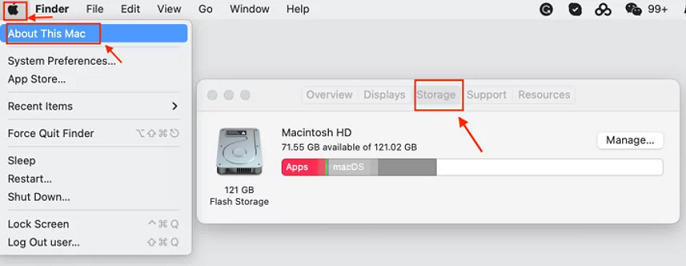
Use Cleaner One Pro’s Smart Scan to examine your Mac’s storage, diagnostics, and programs – you’ll get a full report and further instructions with just one click.
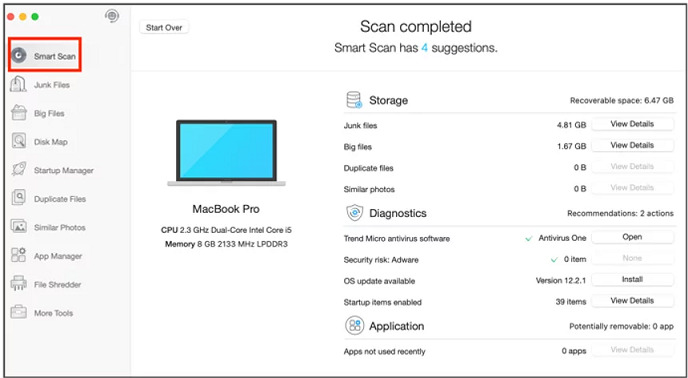
You may also use Cleaner One Pro’s Big Files detector, Duplicate Files detector, and Similar Photos finder to eliminate all the worthless trash files and free up additional space.
2. Remove or reset applications
If you often encounter sluggish programs and your Mac freezes as a result, forcibly quitting is not the ideal approach. You must remove or reset those applications.
To thoroughly delete programs, try Cleaner One Pro again. It includes a dedicated Uninstaller module that can handle the job securely.
1. Navigate to the App Manager tab and press the Scan button.
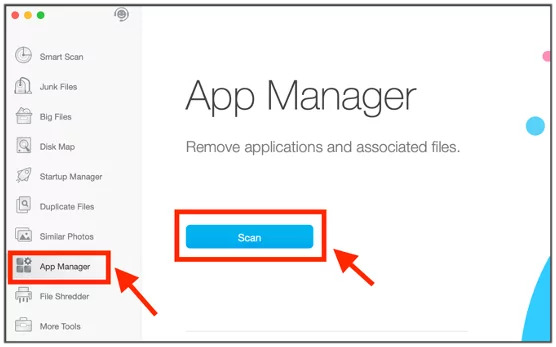
2. Locate the app and select Remove. You can deselect the connected documents if you want to save them.
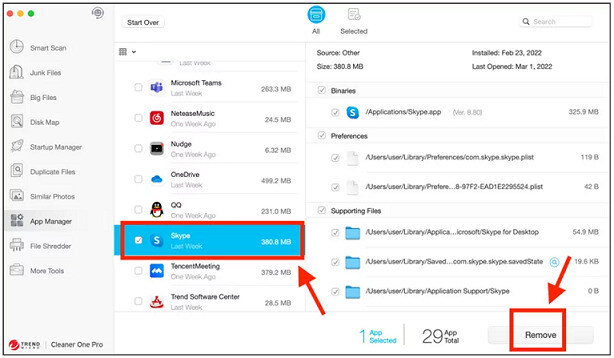
3. If there are any remaining files, drag them to the File Shredder.
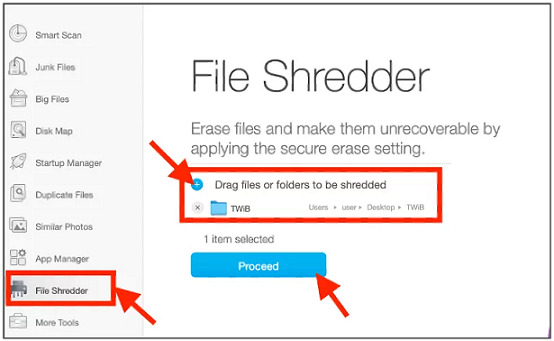
To Sum Up
Using these techniques, users should be able to efficiently fix freezing issues and return to making the most of their Mac. You may recover almost all data with the correct approach before you reformat or repair your device to get it working again.

